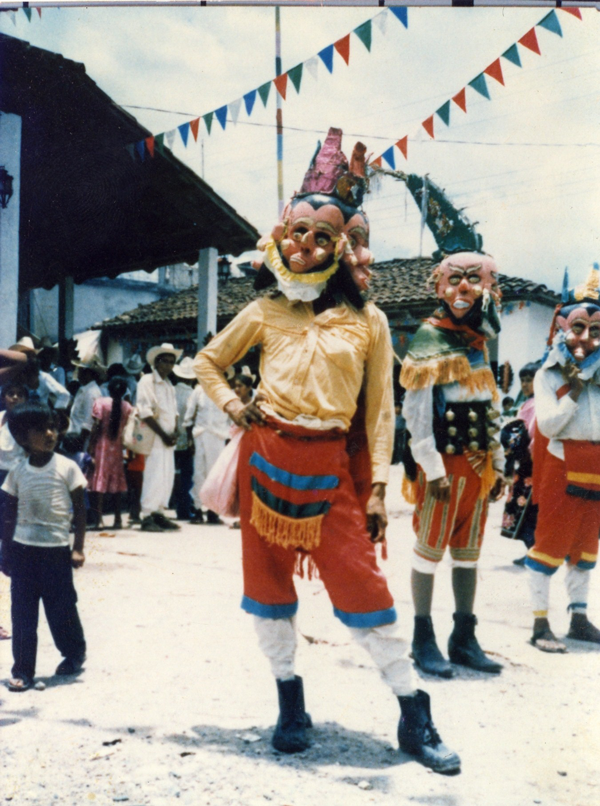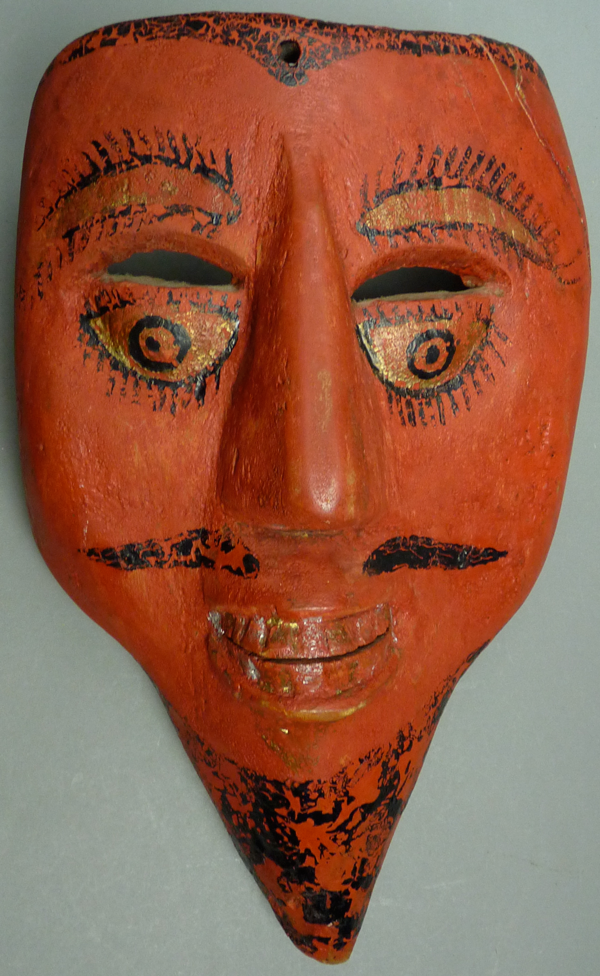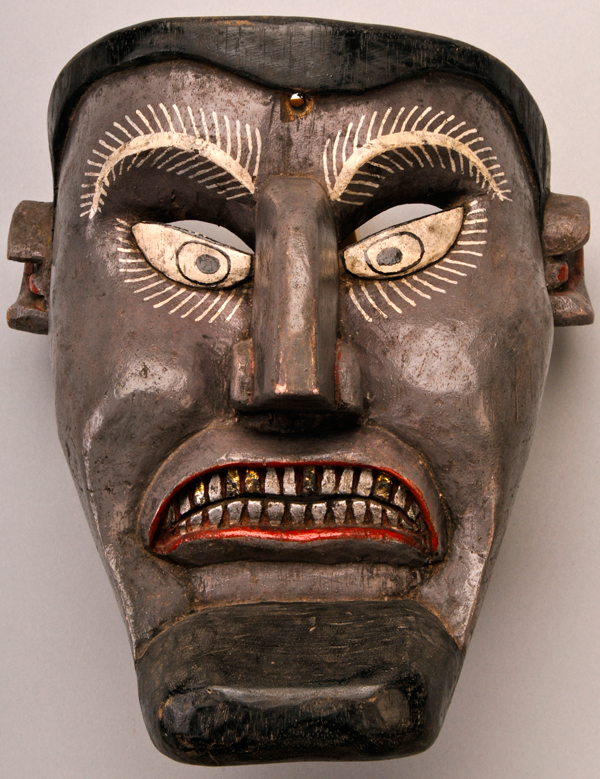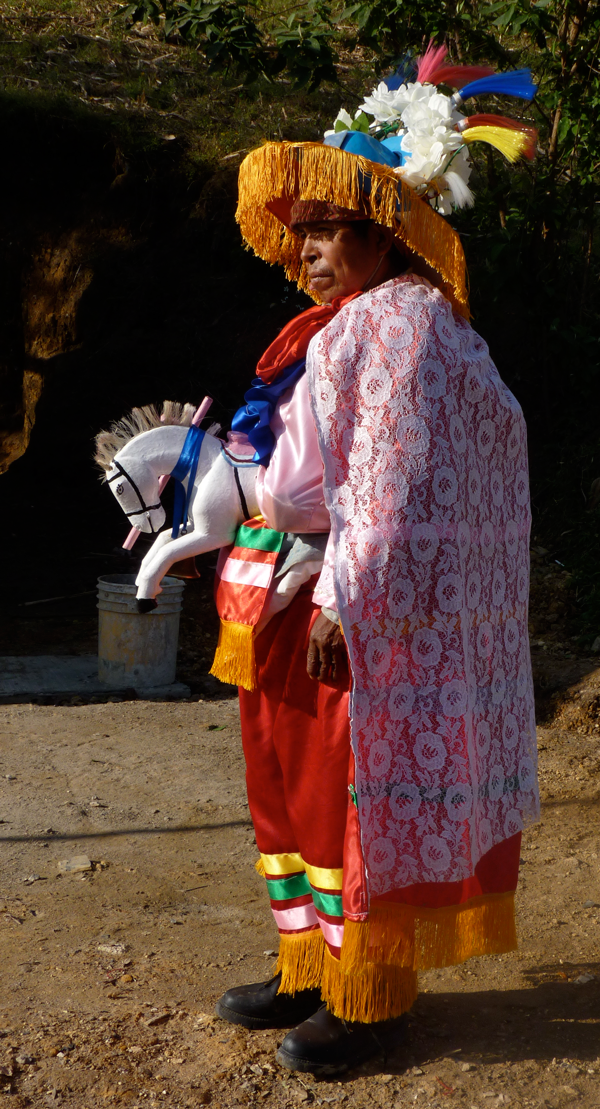Last week I showed you Santiaguero and Pilato masks by Narciso Iturbide Charo, a wonderful carver from San Antonio Rayón, Puebla who died in 1996. Today I will feature four of his three faced Santiaguero masks. These are probably extremely rare; approximately 17 of these were initially collected in the field in the early 1980s and I am not aware that any more have turned up in recent years. It seems that no two of them were the same.
In about 1980 my friend Robin Cleaver found an unusual mask in the city of Puebla; the folk art dealer who owned the mask was in the process of stripping off the “ugly red paint.” The mask was very unusual because it had three faces. I will call this the index mask. Robin purchased the mask and learned the name of the place where it had been found. In a partnership with Jaled Muyaes and Estela Ogazon, Robin and his wife Barbara sent a runner to that town with a camera, and although the camera stopped working during the trip, there was one clear photo on the film roll. This showed Santiaguero dancers in action, wearing traditional costumes, Morion headdresses or paper crowns, and masks with three faces. In this local variant, the morion headress is worn by a Santiaguero and the crowns by Pilatos, yet all wear three faced masks of the same color. A set of about 16 masks was brought out on the backs of mules over mountain trails, as there were no roads to this community at that time. Here is the dance photo that accompanied the masks. According to Manuel Antonio Castañeda, the dancer wearing the green Morion headdress and the apron of bells is Narciso Iturbide Charo himself. Later I will show you his mask.




